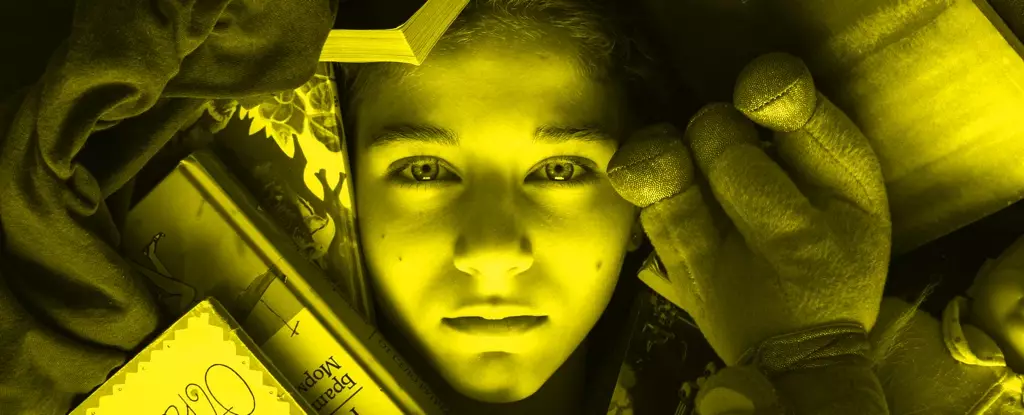Hoarding disorder is a complex psychological condition that often manifests as an overwhelming urge to accumulate and retain items that many might consider trivial or completely useless. This behavior can severely affect a person’s living conditions, leading to cluttered spaces that disrupt everyday functioning and even pose safety risks. Individuals grappling with hoarding disorder may feel intense anxiety when faced with the prospect of discarding possessions, which complicates their ability to declutter effectively. For many, the struggle to let go transcends mere attachment; it intertwines deeply with personal values and emotional histories.
As a licensed clinical psychologist specializing in this area, I frequently encounter the question, “Why do I keep this?” This introspective inquiry is central to understanding the motivations behind hoarding behaviors, particularly among older adults. In this article, I will explore the psychological nuances behind hoarding disorder, the impact of aging on decision-making, and innovative strategies to mitigate clutter by aligning possessions with individual values.
The Emotional Weight of Possessions
Often, the contents of a home serve as reservoirs of memories. A solitary puzzle piece, a vintage cookbook, or a ticket stub from a long-ago concert each holds emotional significance that transcends material value. For many individuals, particularly those of advanced age, items are not merely objects; they are milestones of a life lived, imbued with personal history and sentimental worth. The emotional weight can create an almost instinctual drive to preserve these artifacts.
Research suggests that the cognitive decline associated with aging can complicate the decision-making process. Older adults may experience diminished executive function, impacting their ability to assess which items align with their current lifestyle or future aspirations. Intriguingly, while younger individuals may exhibit higher distress when discarding items, older adults often reveal contrasting emotional responses. Studies indicate that many older adults express a sense of responsibility or altruism when contemplating their possessions, often feeling that items deserve a new home rather than languishing in clutter.
The traditional approach to decluttering can often feel overwhelming, rooted in the apprehension of making a “wrong” choice. However, new research highlights the importance of a values-based approach to decluttering, particularly effective among older adults. Such a methodology encourages individuals to reflect on what genuinely matters to them in life. By identifying core values—be it family, creativity, or community—individuals can better determine which items serve to uphold these principles.
Through my ongoing studies, I have implemented a system where older adults engage in a process of visiting their homes with clinicians who guide them in making deliberate choices about their belongings. Incorporating motivational interviewing techniques, we encourage participants to articulate their desires and fears surrounding their possessions. This process not only aids in reducing clutter but also enhances the participants’ emotional well-being, fostering a sense of accomplishment and clarity.
Drawing from the insights gathered during my research, several actionable steps can assist individuals across various age groups in refining their living environments by embracing a values-centered approach:
1. **Articulate Your Values**: Begin by writing down what matters most to you. Are family heirlooms significant due to their emotional ties? Or do you prioritize practicality and utility? These reflections will help frame your decluttering process.
2. **Categorize Your Space**: Consider establishing value-consistent goals for your environment. Whether you aspire to a tidy workspace for increased productivity or desire space for family gatherings, clarity in your objectives can guide your decision-making.
3. **Acknowledge Conflicting Values**: There will be instances where your values conflict. A cherished gift may hold sentimental value but serve no practical purpose. Weighing which value is more significant in the context of your life can facilitate difficult decisions about what to keep or discard.
4. **Maintain Curiosity in Support**: If you’re assisting someone else in decluttering, approach their attachments with empathy. Different perspectives contribute to the significance assigned to many items. What seems like clutter to you may be a treasure to them.
Hoarding disorder is a nuanced psychological condition that demands compassion and understanding. With age, individuals often accumulate a rich tapestry of memories tied to their possessions, which complicates the process of letting go. By adopting a values-based approach, individuals can navigate the emotional landscape of their belongings, encouraging a healthier relationship with what they choose to keep.
As our research demonstrates, aligning our possessions with our values doesn’t just declutter our spaces; it enriches our lives. It’s a transformative journey, emphasizing personal growth and reflection. For those seeking further knowledge on hoarding disorder, numerous resources are available, including the International OCD Foundation, ensuring you’re supported every step of the way.


Leave a Reply